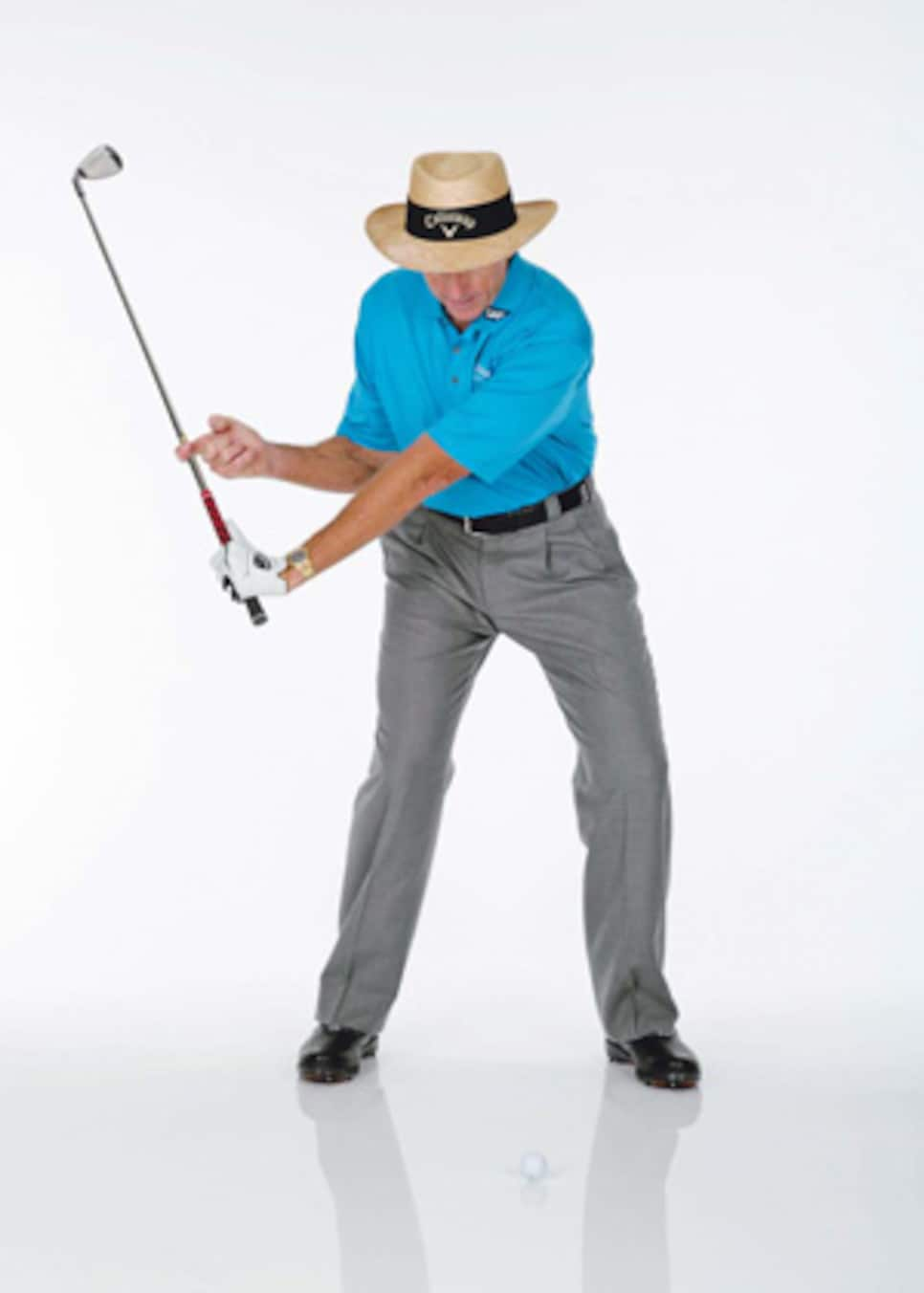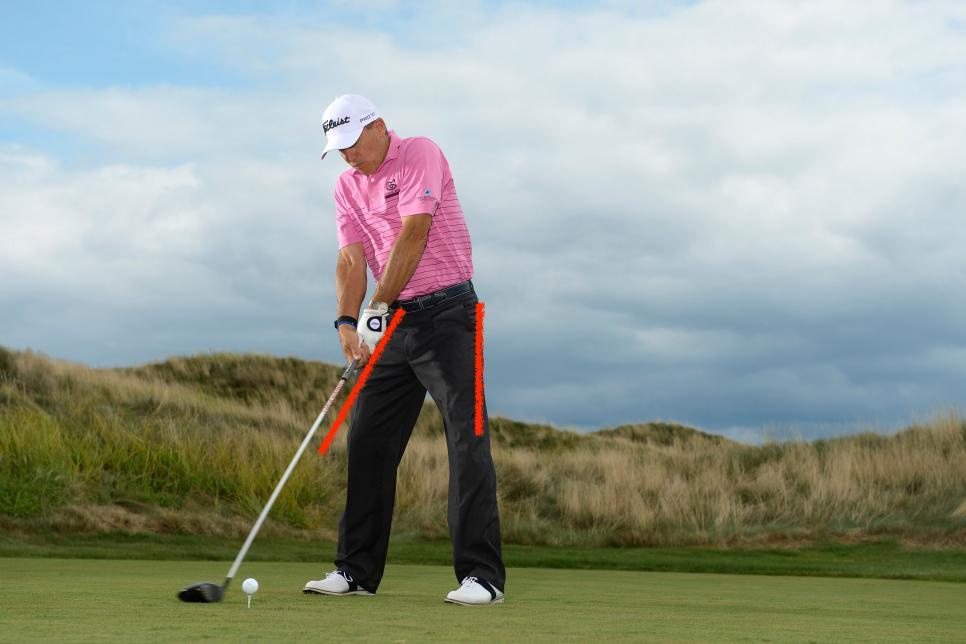I often think about Max Homa’s quote earlier this year when, after winning the Farmers Insurance Open, he reflected on how he broke out of a slump.
“Sometimes you’re just one swing thought away from being good again,” he said.
It’s a sentiment that all golfers can relate to—even if we’re not one thought away from being a tour pro, we’re always one good swing thought away from having a great day and shooting one of our best scores of the season.
We’re perpetually searching for our breakthrough thought or feeling and, a few years ago, I found mine, which led me to shave three strokes off my handicap in just a few months, moving from a plus-1 handicap to plus-4.
Let’s talk about lag and shaft lean, two popular and perhaps misunderstood elements in the swing.
Stop chasing ‘lag’, create ‘lean’ instead 
Put simply, when you’re looking at your swing from face-on, lag is the angle between your arms and the club shaft in the downswing. Lag tends to increase shaft lean, where the hands and club shaft are in front of the clubhead at impact.
Before my breakthrough, I was searching for all the lag and shaft lean that I could get because I had seen all of the images of tour pros at impact with their hands well ahead of the shaft.
So in the downswing, I would hold the angle in my wrists and jam my arms into the side of my body coming down to try to create that powerful impact position. It didn’t work. I had a two-way miss, hit a lot of shots fat and took huge divots.
It turns out, I was misunderstanding the concept of lag and shaft lean, which was explained to me by Golf Digest Top 50 Teacher Jim Suttie.
Shaft lean, he explained, does not come from a conscious driving of the hands and arms forward at impact. Instead, the shaft is leaning forward at impact simply because your body are slightly more forward at impact than they were at address.
Put simply: your hips shift towards the target, but the ball stays in the same place. That naturally places the club shaft ahead of the ball and helps you hit better shots.


Instead of holding the angle in the wrists and arms, suddenly I had the freedom to release the club. I got the feeling of shifting my body towards the target in the downswing while letting the wrists and arms release earlier. I no longer took huge divots and my misses were much smaller.
This also solves the ‘scooping’ problem
Now, it’s true that you may suffer from casting, or scooping, but again, that’s probably a byproduct of a bad sequence. Focus on moving your hips correctly, and you’ll solve your scooping issue without even trying.
As coaches and biomechanistic learn more about the swing thanks to 3D technology and force plates, they are seeing that many tour pros are making this move: gradually straightening their trail arm in the downswing and not holding the angle until the last second.
2 ‘Release it’ drills
1. Right arm only swings
There are a couple drills that I did consistently to get this new feeling and they will help you, too. The first is right-arm only swings. Start without a ball and swing with just your right arm only. Feel your weight shifting into your lead leg on the downswing and extend your right arm through towards the target after impact.
You will feel your right arm gradually extending in the downswing. This is what you want to feel as opposed to jamming it into your side. Tee up a ball and hit a few 7-irons with just your right arm. Don’t worry about the contact, you’re just getting the proper feel. Then, hit a few shots normally and feel how your right arm and wrists are releasing coming down.
2. Irons off a high tee
Another great drill Suttie gave me is to hit shots with a 7-iron with the ball teed up like you would to hit a driver. It might look strange, but this will give you the feeling of sweeping the ball and allowing the club to release properly. It’s also a great drill if you come over the top and hit slices, as if you do that with the ball teed up high, you’ll completely miss the ball and only hit the tee.
Let’s be clear: shaft lean is good; you just need the right kind of shaft lean.
